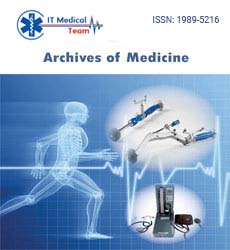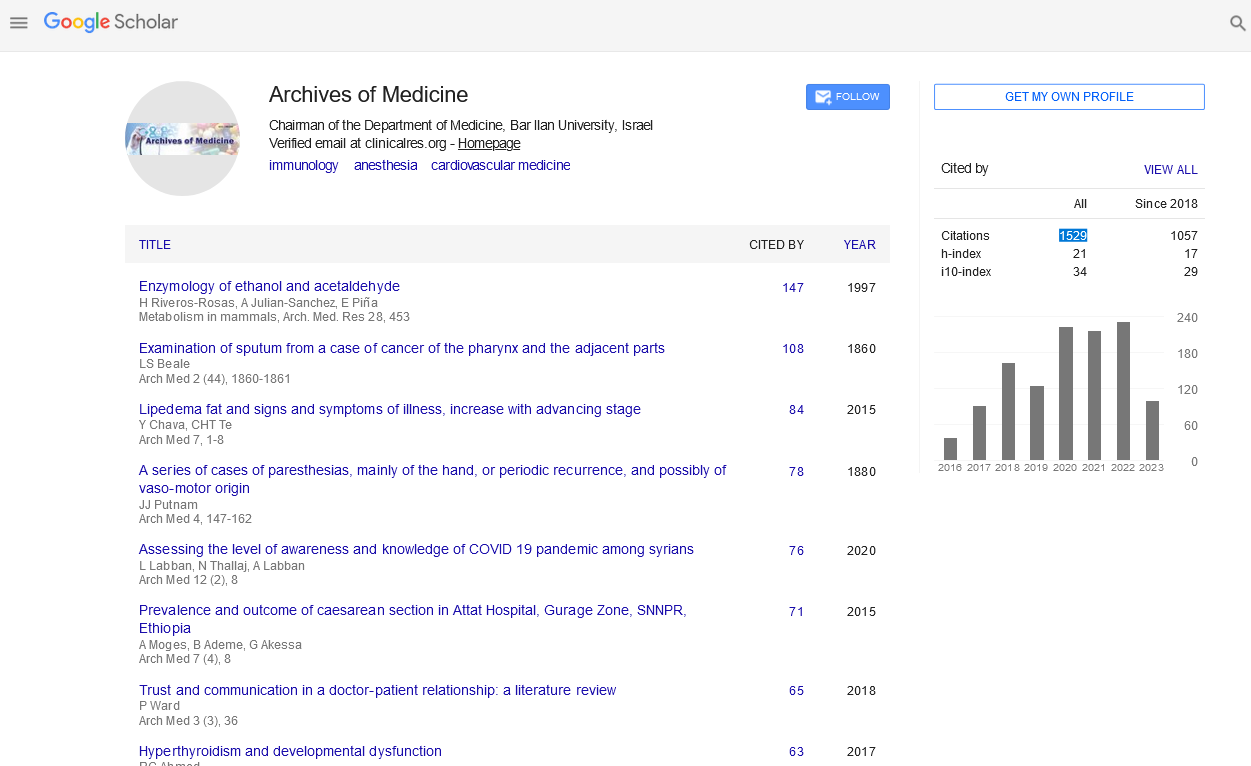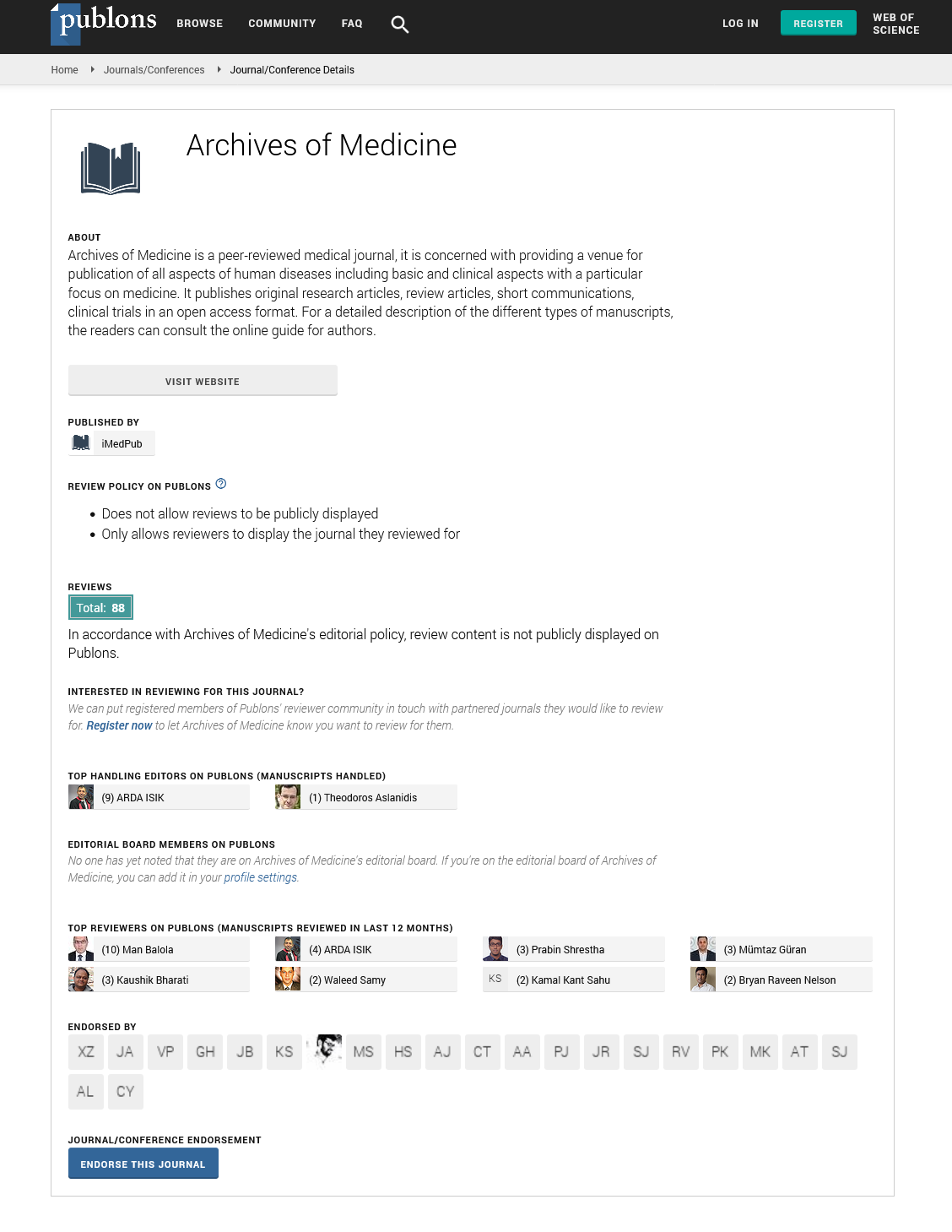Commentary - (2024) Volume 16, Issue 5
Advancements in pulmonary and critical care medicine: Enhancing patient outcomes in respiratory health
Alexander Matthews*,
Alexander Matthews and
Olivia Bennett
Department of Pulmonary and Critical Care Medicine, Stanford University, Stanford, CA, USA
*Correspondence:
Alexander Matthews, Department of Pulmonary and Critical Care Medicine, Stanford University, Stanford, CA,
USA,
Email:
Received: 15-Aug-2024, Manuscript No. ipaom-24-15396;
Editor assigned: 17-Aug-2024, Pre QC No. P-15396;
Reviewed: 29-Aug-2024, QC No. Q-15396;
Revised: 03-Sep-2024, Manuscript No. R-15396;
Published:
10-Sep-2024
Introduction
Pulmonary and critical care medicine is a vital specialty that focuses on the diagnosis, treatment, and management of respiratory diseases and conditions, particularly in critically ill patients. As respiratory illnesses, including Chronic Obstructive Pulmonary Disease (COPD), asthma, pneumonia, and Acute Respiratory Distress Syndrome (ARDS), continue to affect millions worldwide, advancements in this field are essential for improving patient outcomes and enhancing quality of life. The burden of respiratory diseases continues to grow, driven by factors such as air pollution, smoking, and an aging population, making the role of pulmonary specialists increasingly important in contemporary healthcare. Recent innovations in diagnostics, therapeutics, and patient management strategies have transformed how healthcare providers approach respiratory health. From cutting-edge technologies in mechanical ventilation to the integration of telemedicine and personalized treatment plans, these advancements are reshaping the landscape of pulmonary care [1]. This article explores the latest developments in pulmonary and critical care medicine, highlighting their significance in enhancing patient outcomes and addressing the complex challenges associated with respiratory health.
Description
Recent advancements in pulmonary and critical care medicine have significantly improved the management of respiratory diseases, driven by innovations in technology and a deeper understanding of respiratory pathophysiology. One of the most notable developments is the enhancement of diagnostic tools. Techniques such as advanced imaging modalities, including High-Resolution Computed Tomography (HRCT) and Magnetic Resonance Imaging (MRI), have improved the ability to visualize lung structures and identify pathological changes [2]. Additionally, the use of biomarkers and genetic testing has allowed for more precise diagnoses, particularly in conditions like asthma and interstitial lung diseases, enabling tailored treatment approaches that address individual patient needs.
In the realm of treatment, the evolution of mechanical ventilation and non-invasive ventilation techniques has revolutionized patient care in critical settings. Modern ventilators are equipped with advanced modes and algorithms that optimize oxygen delivery and minimize lung injury. The introduction of High-Flow Nasal Cannula (HFNC) therapy and Continuous Positive Airway Pressure (CPAP) has provided alternative options for patients with respiratory failure, improving comfort and outcomes without the need for invasive procedures. Moreover, advancements in Extracorporeal Membrane Oxygenation (ECMO) have expanded treatment options for patients with severe respiratory failure, allowing for better gas exchange and recovery in critical situations [3].
Pharmacological advancements also play a crucial role in enhancing patient outcomes in pulmonary care. The development of targeted therapies, such as biologics for asthma and chronic bronchitis, has changed the landscape of treatment, providing more effective management options with fewer side effects. Furthermore, innovative drug delivery systems, such as nebulizers and inhalers with digital technology, have improved medication adherence and efficacy, ensuring that patients receive the full benefits of their prescribed treatments.
Telemedicine has emerged as a valuable tool in pulmonary and critical care medicine, particularly in light of the COVID-19 pandemic. Virtual consultations enable healthcare providers to monitor patients remotely, assess symptoms, and adjust treatment plans without the need for in-person visits. This approach has proven essential in managing chronic respiratory diseases, allowing for continuous care and timely interventions while reducing exposure risks. Collaboration among multidisciplinary teams, including pulmonologists, critical care specialists, respiratory therapists, and nurses, is vital for delivering comprehensive care. This integrated approach ensures that patients receive holistic management tailored to their unique circumstances, improving communication and coordination of care throughout the treatment process [4].
Recent innovations in the field have significantly transformed how healthcare providers approach respiratory health. Breakthroughs in diagnostics, including advanced imaging techniques and biomarker identification, have enhanced the ability to detect and characterize lung diseases at earlier stages. Moreover, therapeutic advancements—ranging from cutting-edge mechanical ventilation technologies to novel pharmacological treatments—have redefined the standards of care for patients experiencing respiratory distress.
Additionally, the integration of telemedicine and digital health tools has revolutionized the management of pulmonary conditions, allowing for real-time monitoring and personalized care plans that extend beyond traditional clinical settings. This shift not only improves access to care for patients but also fosters a more proactive approach to managing chronic respiratory diseases. As the field of pulmonary and critical care medicine continues to evolve, it is crucial to recognize the impact of these advancements on patient outcomes. By exploring the latest developments and their implications for clinical practice, we can gain valuable insights into how to best address the complex challenges associated with respiratory health. This article delves into key innovations in pulmonary and critical care medicine, highlighting their significance in enhancing patient outcomes and shaping the future of respiratory care [5].
Conclusion
Advancements in pulmonary and critical care medicine are playing a transformative role in enhancing patient outcomes and addressing the complexities of respiratory health. From innovative diagnostic tools to cutting-edge treatment modalities and the integration of telemedicine, these developments are reshaping how healthcare providers approach respiratory diseases. As the prevalence of chronic respiratory conditions continues to rise, the importance of ongoing research and innovation in this field cannot be overstated. Looking ahead, the continued focus on personalized medicine, technology integration, and collaborative care will further enhance the quality of pulmonary and critical care. By leveraging these advancements, healthcare providers can ensure that patients receive optimal treatment tailored to their individual needs, ultimately leading to improved health outcomes and quality of life. As we navigate the challenges posed by respiratory illnesses, the future of pulmonary and critical care medicine holds great promise, paving the way for more effective, compassionate, and patient-centered care.
Acknowledgment
None.
Conflict of Interest
None.
References
- Raimondi N, Vial MR, Calleja J, et al. Evidence-based guidelines for the use of tracheostomy in critically ill patients. J Crit Care. 2017 1;38:304-18.
Google Scholar, Crossref, Indexed at
- Hernandez G, Ramos FJ, Añon JM, et al. Early tracheostomy for managing ICU capacity during the COVID-19 outbreak: A propensity-matched cohort study. Chest. 2022 1;161(1):121-9.
Google Scholar, Crossref, Indexed at
- Beigel JH, Tomashek KM, Dodd LE, et al. Remdesivir for the treatment of Covid-19—preliminary report. N Engl J Med. 2020 5;383(19):1813-36.
Google Scholar, Crossref
- Knaus WA, Draper EA, Wagner DP, et al. APACHE II: a severity of disease classification system. Crit Care Med. 1985 1;13(10):818-29.
Google Scholar, Crossref
- Kress JP, Hall JB. ICU-acquired weakness and recovery from critical illness. N Engl J Med. 2014 24;370(17):1626-35.
Google Scholar, Crossref






